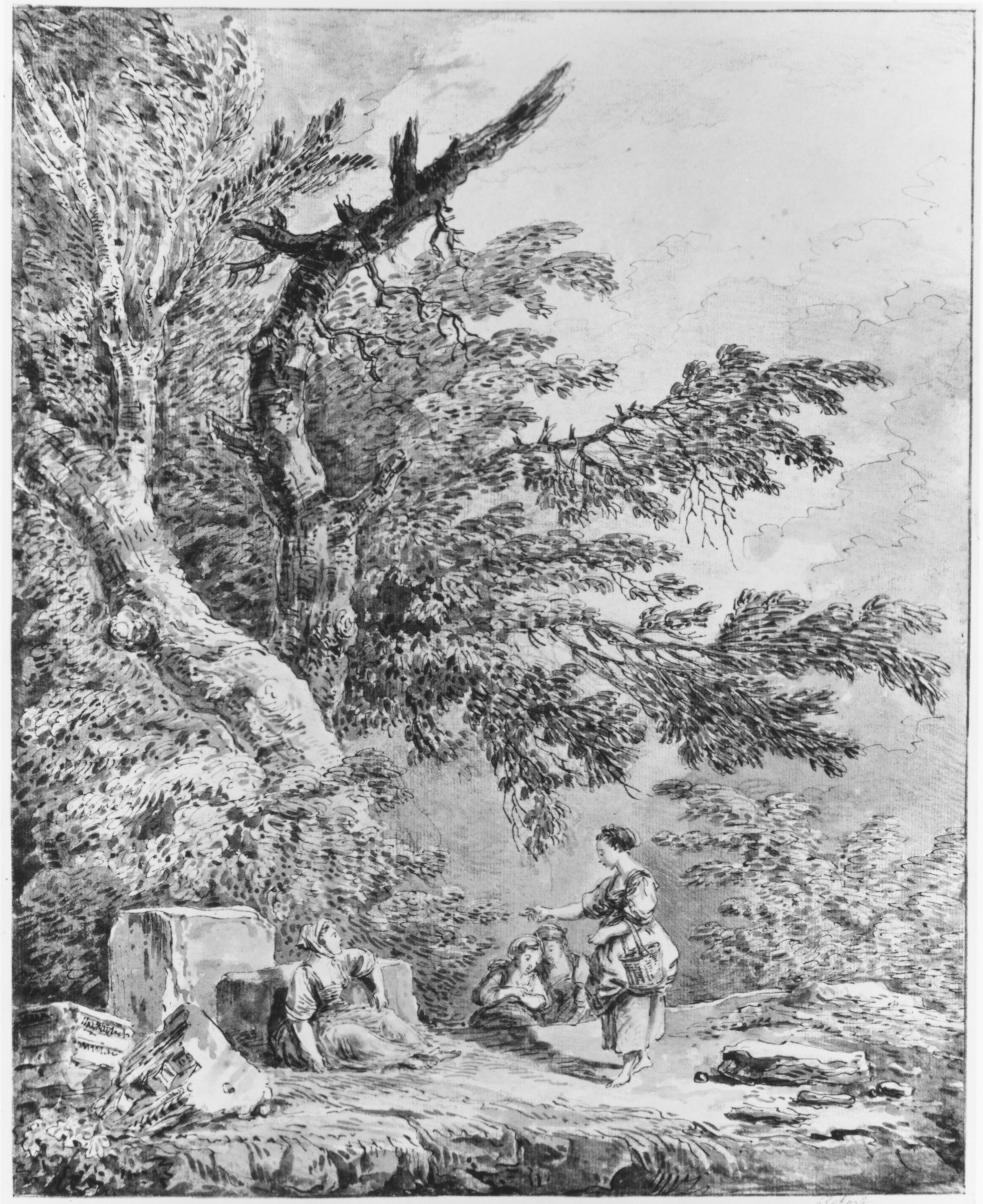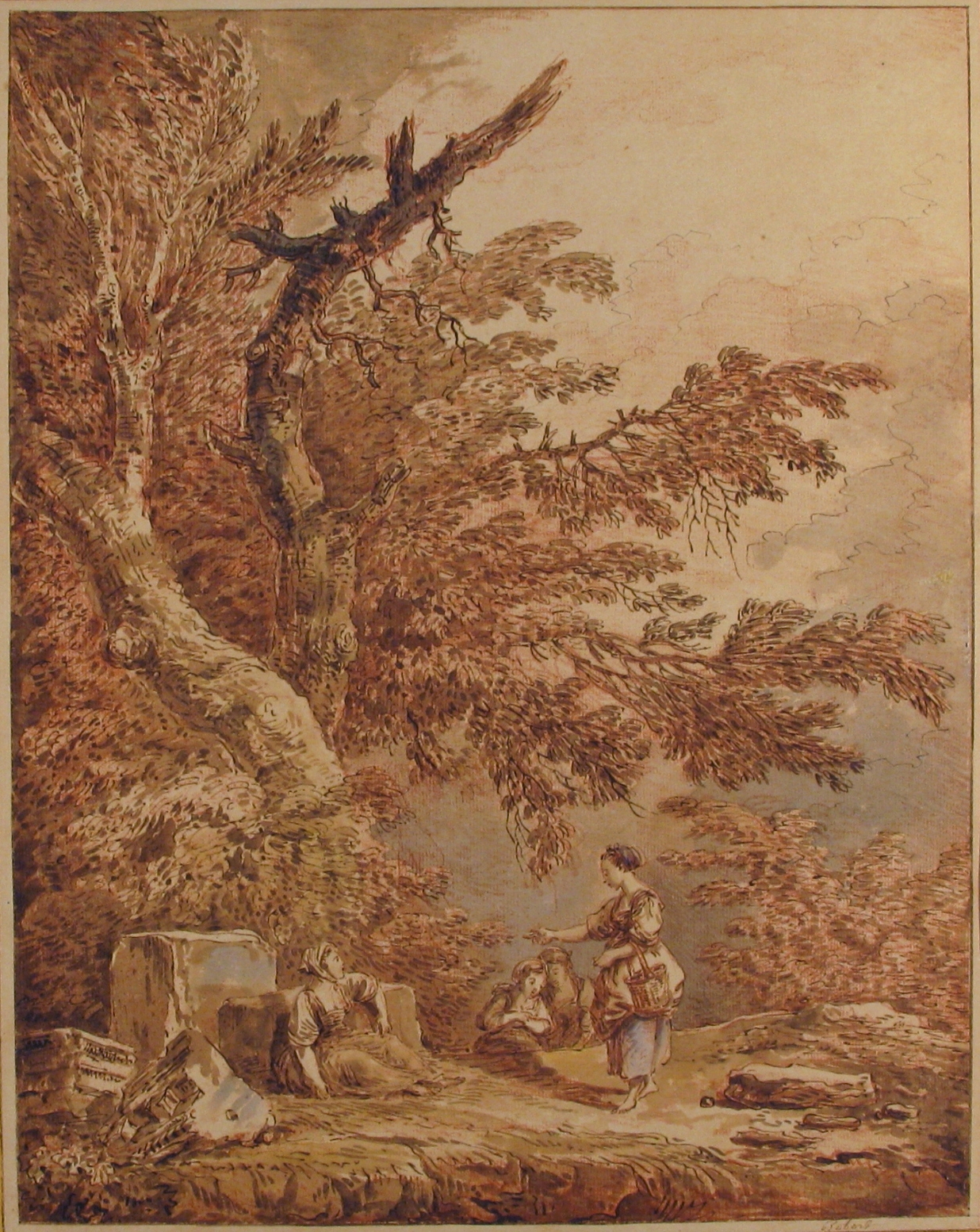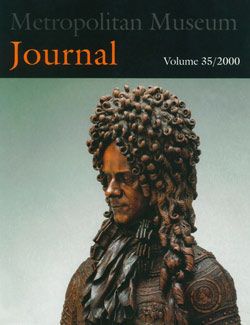Young Women in a Landscape with Architectural Fragments
Hubert Robert French
Not on view
French artists of the eighteenth century frequently made counterproofs of their chalk drawings, but Hubert Robert stands apart for his sustained practice of re-working his counterproofs in pen and wash to create attractive works for the market (Sarah Catala, "Les usages de la contre-épreuve dans le dessin français du XVIIIe siècle", Cahiers d’histoire de l’art, 2015, no. 13, 35-43). A counterproof is made by placing a moistened sheet of paper on a red or black chalk drawing and then running them though a printing press. Excess chalk from the original transfers to the blank sheet, resulting in a pale replica in reverse direction. A counterproof is always characterized by a uniform distribution of the chalk, more or less intense depending on the humidification of the paper. This fast and straightforward technique was an essential part of Robert’s working process, as it both preserved the original (by removing excess chalk) and created a new variant.
After returning to Paris in 1765, following 11 years of study in Italy, Robert continued to sell re-worked counterproofs, sometimes taken from from drawings exhibited at the Salon. Robert adapted his production to the tastes of his clients, who were fond of picturesque and pastoral scenes representing women going about their domestic activities. His re-worked counterproofs should not be seen as copies, but as variants. His goal was not to replicate, but to create a new version. Indeed, the re-worked counterproofs have a higher degree of finish and refinement as well as a distinct pictorial effect due to the addition of ink, wash, and, in this case, touches of watercolor. That the Met drawing can be situated within this lucrative and prestigious production is supported by the fact that it bears at lower right the blind stamp of a renowned restorer and mount maker active in Paris in the second half of the 18th century, François Renaud. A drawing in a private collection, The Antique Fountain, dated 1773 and likewise drawn over a counterproof and mounted in the same way, may have once been a pendant to the Met’s drawing, as Anna Zablocki has suggested (Stein, 2000, pp.180-82).
Choosing a vertical format, Robert combined several of the motifs that had contributed to his success: a wooded landscape, abandoned ruins, and washerwomen in conversation. He used the red chalk counterproof as the foundation of a composition that he freely enhanced. The pen and brown ink are loosely superimposed on the pale chalk lines, indicating with verve and confidence the figures and their costumes, as well as the vegetation and scattered antique fragments. It has to be noted that Robert redrew some branches, while in other places leaving the marks of the red chalk counterproof untouched. He then added a few brush strokes with wash to reinforce the volumes of the stones and to emphasize the play of light and shadow in the dense foliage. For the sky, he accented the hatching of the counterproof by outlining the clouds with pen and ink and modeling them with touches of gray-blue watercolor. Areas of green watercolor, faded with time, would have been added to counterbalance the warm tomes of the red chalk counterproof.
The Met has a second red chalk counterproof (40.91.17) by Hubert Robert which has been re-worked not by the artist, but probably by one of his colleagues or by one of the amateurs to whom he gave lessons (op. cit., pp.39-40).
Sarah Catala (August, 2017)
This image cannot be enlarged, viewed at full screen, or downloaded.
This artwork is meant to be viewed from right to left. Scroll left to view more.








